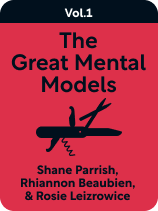

This article is an excerpt from the Shortform book guide to "The Great Mental Models Volume 1" by Shane Parrish and Rhiannon Beaubien. Shortform has the world's best summaries and analyses of books you should be reading.
Like this article? Sign up for a free trial here.
What is Hanlon’s Razor? How can it help you get a clearer picture of reality?
Hanlon’s Razor is a self-contained “rule of thumb” for solving tough problems. When applied correctly, it can help you slice through complications, eliminate mental clutter, and home in on clear answers.
Continue reading to understand what Hanlon’s Razor is and how to use it to achieve clarity and solve problems.
Hanlon’s Razor
Much like Occam’s Razor, Hanlon’s Razor quickly cuts through complicated explanations. What is Hanlon’s Razor? In short, it states that the most likely explanation involves the least ill intent. In The Great Mental Models Volume 1, Shane Parrish and Rhiannon Beaubien explain that bad things usually result from ignorance or a lack of thought rather than malice.
This is because people tend to take the path of least resistance. Making a plan and acting on it takes much more effort than acting unthinkingly, so there are far fewer premeditated evils than simple, ill-considered mistakes. For instance, most insults come from heat-of-the-moment emotions, not master plans to tear down your self-esteem.
(Shortform note: There’s a scientific basis for this razor: People do take the path of least resistance, and it’s because we’ve evolved to conserve energy. This is evident in the way the brain automates habits—the more you repeat a behavior, the more automatic it becomes. There’s also evidence that some people are averse to effort, choosing easier tasks even when they’re less enjoyable. Hence, it’s not only easier to take the path of least resistance, but it also often happens without our knowing it.)
The authors recommend using Hanlon’s Razor to realize that the world contains more chaos than evil. They suggest that we drop the reactive, emotional assumptions we make when bad things happen and instead remember that bad things, such as house fires, occur due to chaos rather than malicious actors.
Used this way, Hanlon’s Razor helps you become less self-absorbed. Instead of assuming that people are out to get you—a self-absorbed perspective—realize that bad things just happen by chance and, most likely, nobody has a plan to hurt you on purpose.
(Shortform note: Insofar as Hanlon’s Razor can help you decenter your ego from every situation, it’s a close cousin of the third agreement from The Four Agreements. The third agreement is another rule of thumb for clear thinking: Make no assumptions. Don Miguel Ruiz argues that when you stop making assumptions, you prevent yourself from overanalyzing situations and acting on mistaken beliefs.)
Shortform advice for applying this model: Use Hanlon’s Razor in interpersonal situations. When something bad happens to you as a result of another person’s actions, stop and ask yourself, “Did they really mean to harm me? What other, less intentional explanation could there be?” You might realize that, for example, your partner fought with you because she was stressed about work, not because she was out to get you.

———End of Preview———
Like what you just read? Read the rest of the world's best book summary and analysis of Shane Parrish and Rhiannon Beaubien's "The Great Mental Models Volume 1" at Shortform.
Here's what you'll find in our full The Great Mental Models Volume 1 summary:
- What mental models are and how they work
- How to make better decisions by using mental models
- How to use your imagination to evaluate your choices






